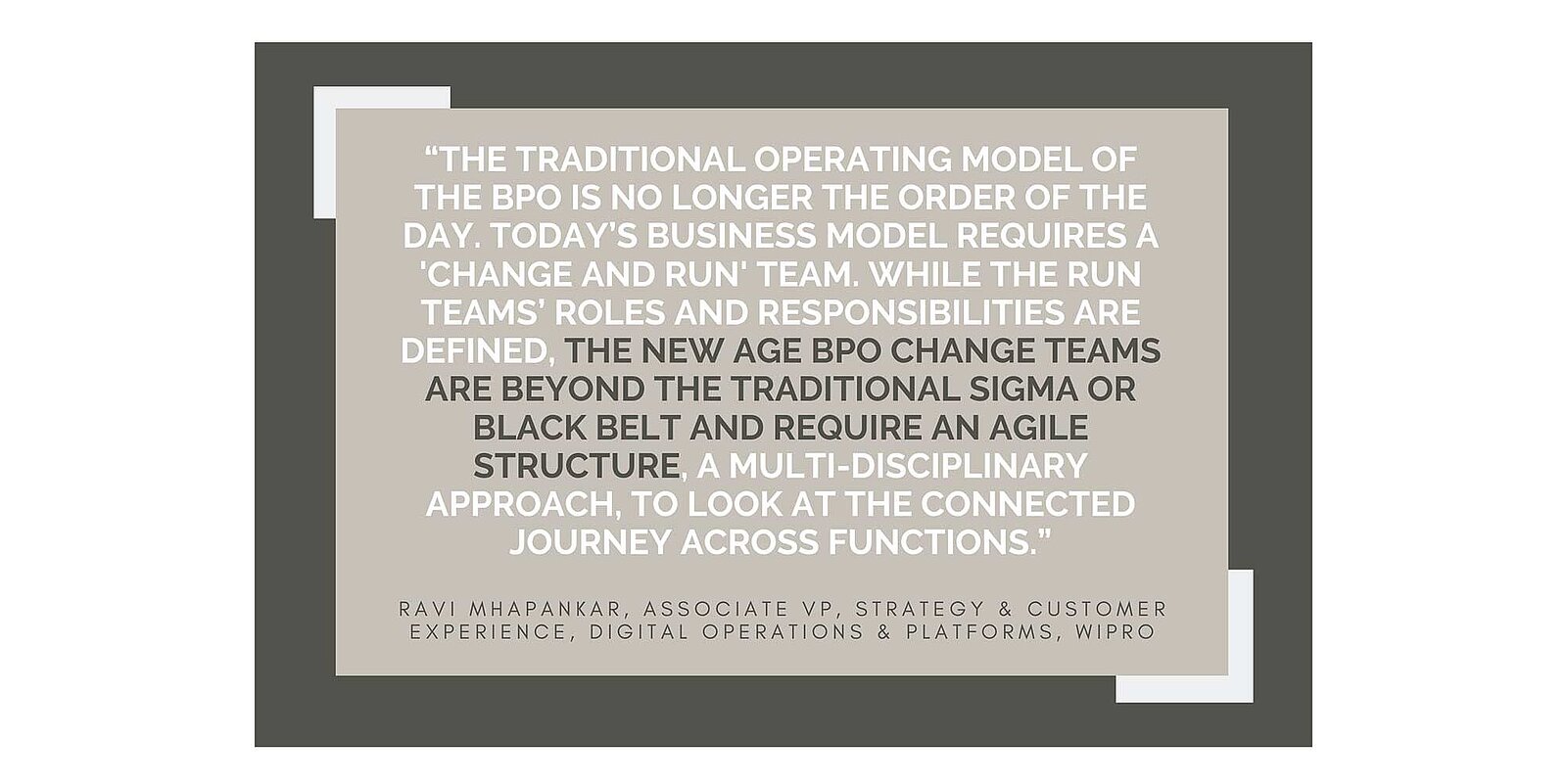High growth in the BPO industry driving process automation adoption
TCG Process works with a number of BPOs across the globe. TCG Australia is one of our more active regions in this area, so we sat down with the team in Sydney to discuss how they are supporting the high growth BPO industry.
Why are BPOs looking to TCG Australia?
Australian organizations have long recognized the value in partnering with business process outsourcers to digitally transform core business processes and the trend has accelerated through COVID. In the past, value was realized through labor arbitrage and scale efficiencies, however, the BPO market has evolved into process specializations that can quickly offer clients automation efficiencies. But building the infrastructure for these process specializations may take considerable time for some to develop in-house.
TCG’s automation platform, DocProStar, is a great fit for BPOs not only for these reasons but also because our internal expertise supports partnering with them. BPOs and Shared Service Centers have been core to TCG’s roadmap and ongoing development, so it simply makes sense that we focus on BPOs.

The TCG Australia team, from left to right: Frank Volckmar, Roger Stanmore, Jeff Leibovici and Arijit Sarkar
What has the change in working habits had on the BPO market?
Mobile phones and remote work for employees mean organizations are aggressively adopting portal and mobile means of interacting with prospects and customers, too. This, according to analysts, has increased the number of documents, largely digital, organizations must process by 4x in 2020. Not surprisingly, nearly 60% of these documents are unstructured and require capture then classification for the organization to drive a winning—and expected—high-quality customer experience. This is both challenging and expensive for organizations without automation or scale; logically they look to outsource. BPOs have resource scale and proven automation capabilities; organizations understand the value in leveraging that.
The result: the workload for BPOs is growing, substantially, with many finding themselves at an inflection point where they are choosing between investment in resources or greater levels of automation. In our opinion, automation will win out.
What are the common challenges you see in the BPO market?
BPOs find it challenging to maintain their differentiation in an extremely dynamic and competitive environment while simultaneously lowering costs, meeting service level targets (SLAs), retaining resources and growing profits. Global and specialized players are entering our markets, so innovation and continuous improvement have become a cultural norm for BPOs.
There is a significant focus on achieving high levels of automation. This is motivated by volume and cost efficiencies to offset the continual pressures on the organizational bottom line while providing a superlative experience to customers and prospects.
BPOs need to ensure they are continuously working closely with their clients and suppliers to drive process improvements and create additional value for long term success. This level of reinvestment isn't always easy given tight competition.

Customers are imposing tight SLA metrics and financial penalties on process performance, so BPOs implement end-to-end operational metrics and analytics to ensure customer expectations are met. This can be particularly challenging and expensive if processes are built using a series of modules or different applications. How do you quickly identify and alleviate real time operational bottlenecks when the continuous process requires different interfaces and expertise?
Workforce or resource management is another factor that is a costly aspect of BPO operations. The industry has extremely high attrition rates and significant organizational resources are often spent in attracting, training and retaining BPO staff. The sector’s strong dependency on human resources is expensive and ultimately impacts the customer experience if not managed well. BPOs are seeking to find ways of reducing this resource dependency while ensuring the continuance of high-performance standards. Again, this is where we believe with the right combination of automation, augmented by scalable resourcing, will help them win.
Why is the DocProStar platform right for BPOs?
Built with input from key market leaders in this sector, the DocProStar platform excels in meeting BPO needs by being both smarter and faster. It is very quick to implement (up to 40% faster than other similar solutions); easy to use with its WYSIWYP (what you see is what you process) design and monitoring interfaces; and smarter through extensibility and no/low code configuration. Combining these features gives DocProStar a significant edge in time to market and cost effectiveness for BPO projects.
By using a web-service based architecture, DocProStar easily incorporates best-of-breed external components, including crowdsourcing to reduce verification staffing and/or Google Vision for facial recognition, along with existing in-house technologies.
Continuous improvement is achieved with learning bots and dynamic version control, which allows for real time process updates and improvements.
The visual interface allows for live monitoring of processes including the management of SLAs and viewing of the audit trail. The entire platform is geared to address the needs and pain points currently experienced by BPOs.
Beyond developing a great platform, what other services does TCG provide to the BPO market?
Naturally, having a great solution to meet the ever-evolving requirements of BPOs is core to our offering and will continue to be the focus. This is backed up by an extremely flexible approach, which is where BPOs are seeing considerable value in TCG.
BPOs package their services to meet the needs of client-specific requirements; we provide flexibility to assist in winning new clients in areas such as commercial terms, flexible enablement, deployment and services options. For us, it is about working with our BPO partners to understand their client’s needs, then developing a more than competitive solution with them. A solution that will outperform the terms of their service-level agreements.
That flexibility also extends to white labelling our application to meet the customer experience aims of their clients.
What are the trends in the BPO industry?
In Australia, the BPO market has experienced continuous growth across the region. However, over the last twelve months the demand has increased in Australia and across the world as many organizations have had to formally digitize their processes to accommodate the change in how we work. Covid-19 has driven a demand that BPOs are able to support.
When Covid-19 first hit, unless an organization was already digital, the working world stopped. For those that already had some work-from-home protocols in place, they were able to set up simple remote working environments very quickly. However, this meant that document approvals went from paper-based to electronic, mostly email. It didn’t take long for the email volumes to become an issue, causing a lag in the approval process. With already taxed internal IT departments, developing an automated approval process was something that many organizations realized was just not tenable in-house; this gave BPOs an opportunity.
Another result of remote working is that while the psychological barrier of trust has shifted, various levels of remote work is here to stay.
Organizations are facing increased pressure to ensure their back-end processes are automated, as remote working cannot disrupt client expectations.
The need to adapt and accommodate the shift in working environments quickly, when required, has become a much higher priority. When Covid-19 forced us into lockdown, organizations that were heavy on physical paper were forced to rethink their digitization plans in order to maintain their expected quality of service. BPOs have an opportunity to be part of this shift, delivering a result that will not only increase employee output but will flow through into the customer experience.
Frank, you’ve been in the document processing and information management industry for 15 years, why TCG now?
Good question! It was a phone call from my good friend Bob Fresneda mid-year last year saying he was getting back into the intelligent document processing game. I asked Bob the exact same question you are asking me now: Why? He said he had come across this amazing product that can take process automation to the next level, a game-changer, one that would bolster organizations to enable their digital enterprise by automating the classification, capture and validation of complex document dossiers that feed modern business applications—particularly those used by insurance, banking and government. With my interest piqued he introduced me to Arnold von Bueren, the founder of TCG. He shared his vision and simply said “look at the platform”.
From there, I invited Roger Stanmore to review DocProStar as I trust his candid and discerning decades of experience with all products related to document process automation. We saw a demonstration and Roger’s summary was, “that’s the platform I have always wanted to build”. When someone with Roger’s experience responds that way, one knows where this is heading.
Today, we frequently meet prospects who say, emphatically, they know capture, understand classification, have worked with AI/bots and have seen it all before. To them we simply say, “look at the platform”.
The platform wins minds every time and the people-centric focus of the company wins hearts. That’s why it’s TCG. The market is demanding automation, smarter and faster; DocProStar delivers exactly that, and that’s why it’s right for me now.
Read additional blogs from TCG Process Get in touch with the TCG Australia Team
